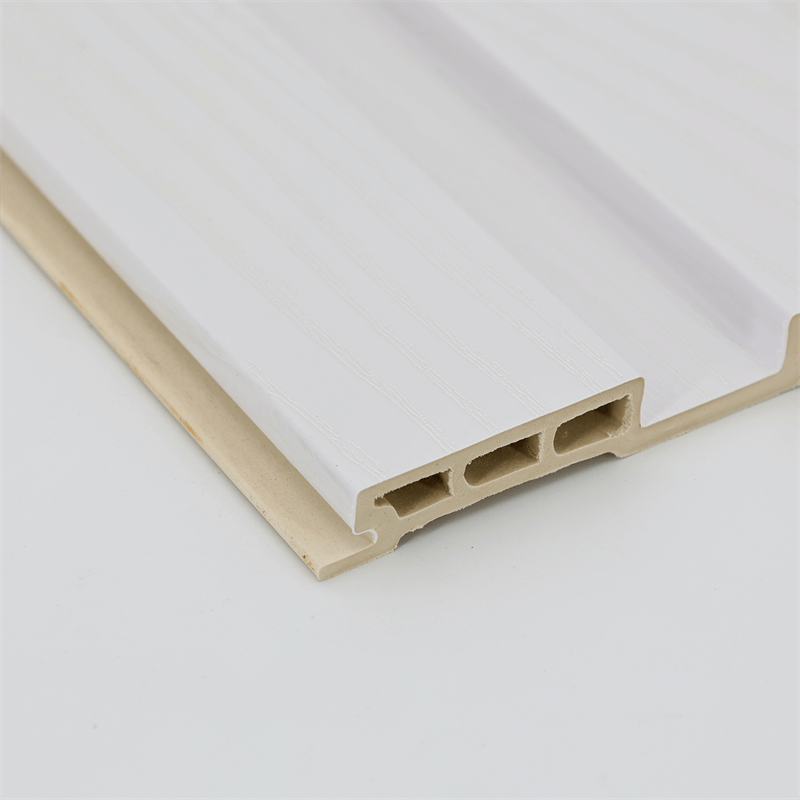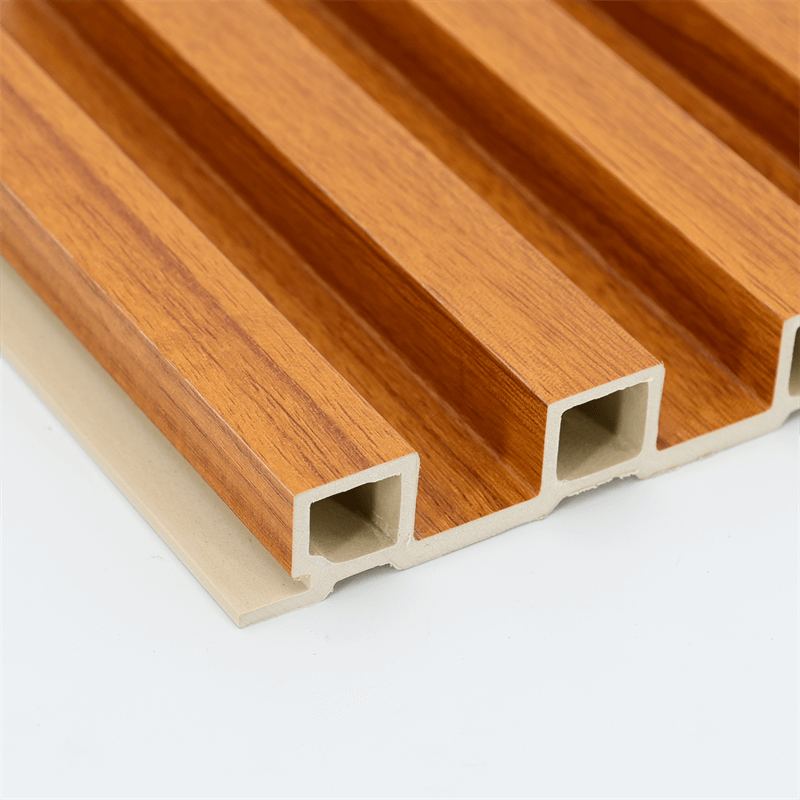Outdoor spaces serve as an extension of our living areas, providing opportunities for relaxation, socialization, and connection with nature.
When designing outdoor spaces, it is crucial to consider materials that not only enhance aesthetics but also withstand the elements.
Wood-plastic composite (WPC) wall panels have gained popularity in recent years due to their unique combination of beauty and weather resistance.
This essay explores the benefits and considerations of using WPC wall panels in outdoor design, focusing on their aesthetic appeal, durability, low maintenance requirements, and environmental sustainability.
I. Aesthetic Appeal: Blending Nature and Design
Outdoor spaces offer an opportunity to connect with nature and create harmonious designs that seamlessly blend with the surroundings.
WPC wall panels provide designers and homeowners with the ability to achieve this aesthetic appeal.
These panels mimic the appearance of real wood, providing warmth, texture, and natural beauty to outdoor walls.
With a wide range of colors, textures, and finishes available, WPC panels can complement various architectural styles, from contemporary to rustic.
Whether used in residential gardens, commercial landscapes, or public spaces, WPC wall panels add a touch of elegance and sophistication to outdoor designs.
The beauty of WPC wall panels lies in their ability to replicate the look and feel of natural wood while offering greater durability and versatility.
The panels can be manufactured in different shapes and sizes, allowing for creative designs and customizations.
They can be used to create accent walls, privacy screens, façade claddings, and other architectural features, adding visual interest and enhancing the overall ambiance of outdoor spaces.
II. Durability: Withstanding the Elements
When designing outdoor spaces, durability is a crucial factor to consider.
The materials used must be able to withstand the harsh elements and remain structurally sound over time.
This is where WPC wall panels excel. Unlike traditional wood, which is prone to rot, decay, and insect damage, WPC is engineered to be highly resistant to these issues.
It is also highly resistant to moisture, extreme temperatures, and UV radiation, ensuring that the panels maintain their structural integrity and aesthetics over time.
The composite nature of WPC wall panels makes them more durable than natural wood.
They are composed of a mixture of wood fibers or flour and thermoplastic polymers, such as polyethylene, polypropylene, or PVC.
This combination of materials results in a product that is resistant to rot, warping, cracking, and splintering.
Additionally, WPC panels have excellent dimensional stability, meaning they do not expand or contract significantly with changes in temperature and humidity, further contributing to their durability.
III. Low Maintenance Requirements: Time and Cost Savings
Maintaining outdoor spaces can be a laborious task, requiring frequent cleaning, staining, and sealing.
However, WPC wall panels significantly reduce the maintenance efforts and costs associated with outdoor design.
These panels do not require painting, sealing, or intensive cleaning like natural wood. A simple regular cleaning with mild soap and water is sufficient to keep WPC wall panels looking fresh and new.
The low maintenance requirements of WPC panels offer significant time and cost savings over the lifespan of an outdoor space.
Unlike wood, which requires periodic staining or painting to maintain its appearance, WPC panels maintain their color and finish without the need for such treatments.
Additionally, the absence of splintering or cracking eliminates the need for sanding or repairs.
This allows homeowners and designers to spend less time on upkeep and more time enjoying the beauty of their outdoor spaces.
IV. Environmental Sustainability: Eco-Friendly Choice
In an era of increasing environmental awareness, choosing sustainable materials for outdoor design is crucial.
WPC wall panels offer an eco-friendly alternative to traditional wood products.
They are primarily composed of recycled wood fibers and plastic, reducing the demand for virgin timber and diverting waste from landfills.
By utilizing recycled materials, WPC panels contribute to the conservation of natural resources and the reduction of waste.
Furthermore, the production process of WPC panels consumes less energy and releases fewer greenhouse gas emissions compared to the manufacturing of other construction materials.
The use of recycled plastic in WPC panels helps to reduce the consumption of fossil fuels and the emission of harmful pollutants associated with the production of virgin plastic.
This makes WPC wall panels a more environmentally sustainable choice for outdoor design projects.
Designing outdoor spaces with WPC wall panels presents a range of benefits, combining beauty and weather resistance in a single material.
These panels offer an array of aesthetic options, enabling designers to create visually captivating outdoor environments.

Furthermore, their durability ensures longevity, withstanding the harshest weather conditions.
The low maintenance requirements of WPC panels save time and money, allowing users to enjoy their outdoor spaces with minimal upkeep.
Finally, the environmental sustainability of WPC wall panels aligns with the growing demand for eco-friendly design solutions.
By utilizing WPC panels, designers and homeowners can create outdoor spaces that not only inspire but also contribute to a greener future.
With their versatility and numerous advantages, WPC wall panels have become a preferred choice for outdoor design projects, offering a perfect blend of beauty, durability, low maintenance, and sustainability.
By incorporating WPC panels into their designs, designers and homeowners can achieve the desired aesthetic appeal, while also benefiting from their weather resistance, longevity, and environmental friendliness.
Whether for residential, commercial, or public spaces, WPC wall panels provide an excellent solution for creating stunning outdoor environments that stand the test of time.
In conclusion, designing outdoor spaces with WPC wall panels is a smart and innovative approach that combines aesthetics, durability, low maintenance, and environmental sustainability.
These panels offer a wide range of aesthetic options, allowing designers to create visually appealing outdoor environments that seamlessly blend with natural surroundings.
With their ability to mimic the look and feel of real wood, WPC panels add warmth, texture, and elegance to outdoor walls, enhancing the overall ambiance of the space.
The exceptional durability of WPC wall panels makes them ideal for outdoor applications.
Unlike traditional wood, WPC panels are resistant to rot, decay, insect damage, and harsh weather conditions.
They maintain their structural integrity and aesthetics over time, ensuring long-lasting beauty and functionality.
Furthermore, the low maintenance requirements of WPC panels provide significant time and cost savings.
Unlike natural wood, WPC does not require painting, sealing, or intensive cleaning. Regular cleaning with mild soap and water is sufficient to keep the panels looking fresh and new.
This allows homeowners and designers to spend more time enjoying their outdoor spaces and less time on maintenance tasks.
From an environmental perspective, WPC wall panels are a sustainable choice.
They are made from recycled wood fibers and plastic, reducing the demand for virgin timber and diverting waste from landfills.
The production process of WPC panels consumes less energy and releases fewer greenhouse gas emissions compared to other construction materials, contributing to a greener future.
By incorporating WPC wall panels into outdoor designs, designers and homeowners can achieve beautiful, durable, and environmentally friendly spaces.
Whether it’s a residential garden, a commercial landscape, or a public park, WPC panels offer a versatile and sustainable solution that satisfies both aesthetic and practical needs.
In summary, WPC wall panels provide a winning combination of beauty and weather resistance, making them an excellent choice for designing outdoor spaces.
Their aesthetic appeal, durability, low maintenance requirements, and environmental sustainability make them a preferred option for creating stunning and long-lasting outdoor environments.
Embracing WPC technology allows us to design outdoor spaces that not only enhance our quality of life but also contribute to a more sustainable and environmentally conscious future.


